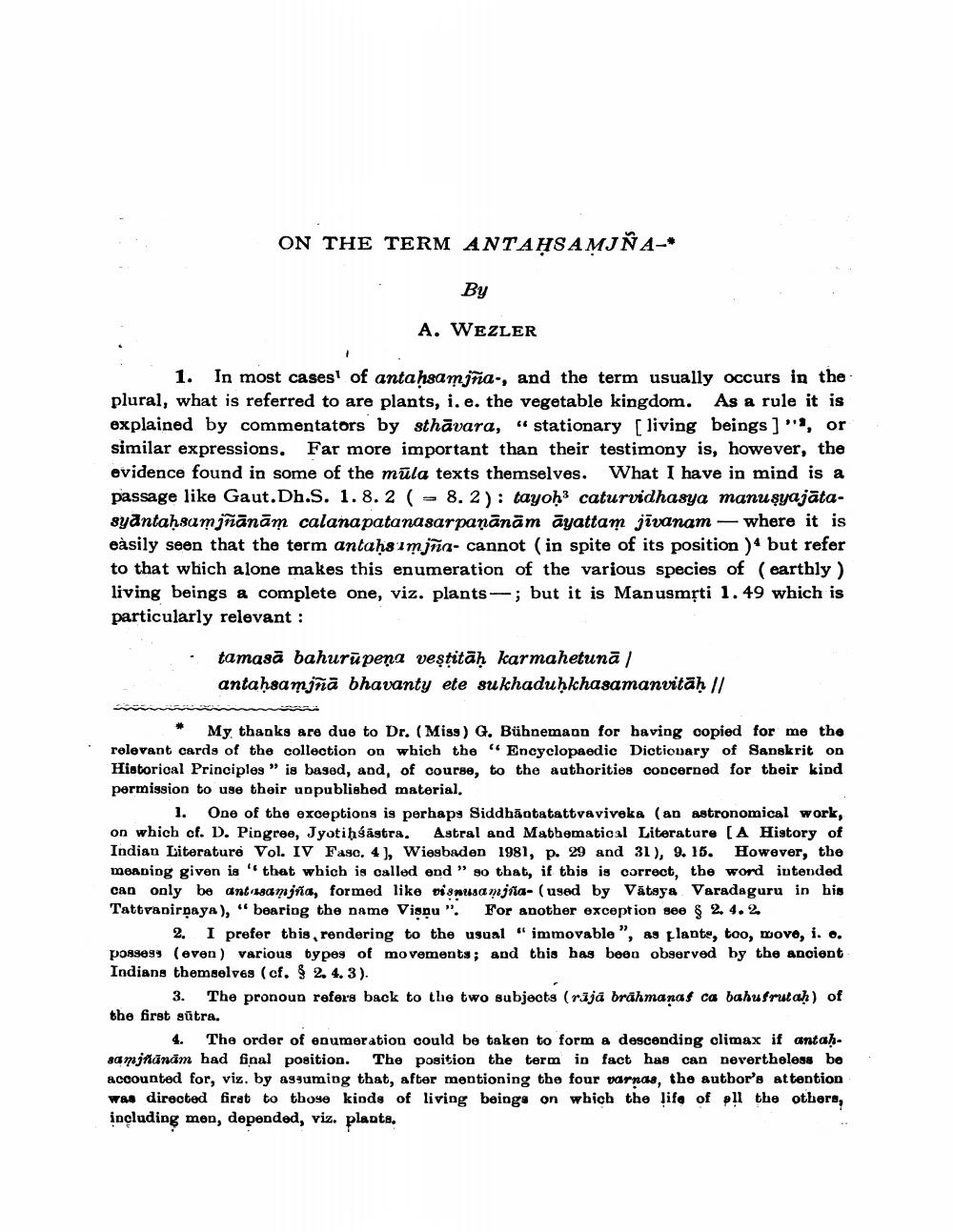Book Title: On Term Antahsamjna Author(s): A Wezler Publisher: A Wezler View full book textPage 1
________________ ON THE TERM ANTAḤSAMJŇA By A. WEZLER 1. In most cases of antaḥsamjña-, and the term usually occurs in the plural, what is referred to are plants, i. e. the vegetable kingdom. As a rule it is explained by commentators by sthāvara, stationary [living beings]", or similar expressions. Far more important than their testimony is, however, the evidence found in some of the mula texts themselves. What I have in mind is a passage like Gaut. Dh.S. 1.8.2 (8.2): tayoḥ caturvidhasya manusyajātasyānlaḥsamjñānām calanapatanasarpaṇānām āyattam jivanam-where it is easily seen that the term antaḥsimjia- cannot (in spite of its position ) but refer to that which alone makes this enumeration of the various species of (earthly) living beings a complete one, viz. plants-; but it is Manusmrti 1.49 which is particularly relevant : tamasă bahurupeņa vesṭitāḥ karmahetunā | antaḥsamjna bhavanty ete sukhaduḥkhasamanvitāḥ // My thanks are due to Dr. (Miss) G. Bühnemann for having copied for me the relevant cards of the collection on which the "Encyclopaedic Dictionary of Sanskrit on Historical Principles" is based, and, of course, to the authorities concerned for their kind permission to use their unpublished material. 1. One of the exceptions is perhaps Siddhantatattvaviveka (an astronomical work, on which cf. D. Pingree, Jyotiḥśastra. Astral and Mathematical Literature [A History of Indian Literature Vol. IV Fasc. 4], Wiesbaden 1981, p. 29 and 31), 9. 15. However, the meaning given is "that which is called end" so that, if this is correct, the word intended can only be antasamjña, formed like visnusamjña- (used by Vatsya Varadaguru in his Tattvanirṇaya), "bearing the name Visnu". For another exception see § 2. 4.2. 2. I prefer this, rendering to the usual "immovable", as plants, too, move, i. e. possess (even) various types of movements; and this has been observed by the ancient Indians themselves (cf. § 2. 4. 3). 3. The pronoun refers back to the two subjects (rājā brāhmaṇas ca bahufrutaḥ) of the first sutra. 4. The order of enumeration could be taken to form a descending climax if antaḥsamjñānām had final position. The position the term in fact has can nevertheless be accounted for, viz. by assuming that, after mentioning the four varnas, the author's attention was directed first to those kinds of living beings on which the life of all the others, including men, depended, viz. plants.Page Navigation
1 2 3 4 5 6 7 8 9 10 11 12 ... 21
